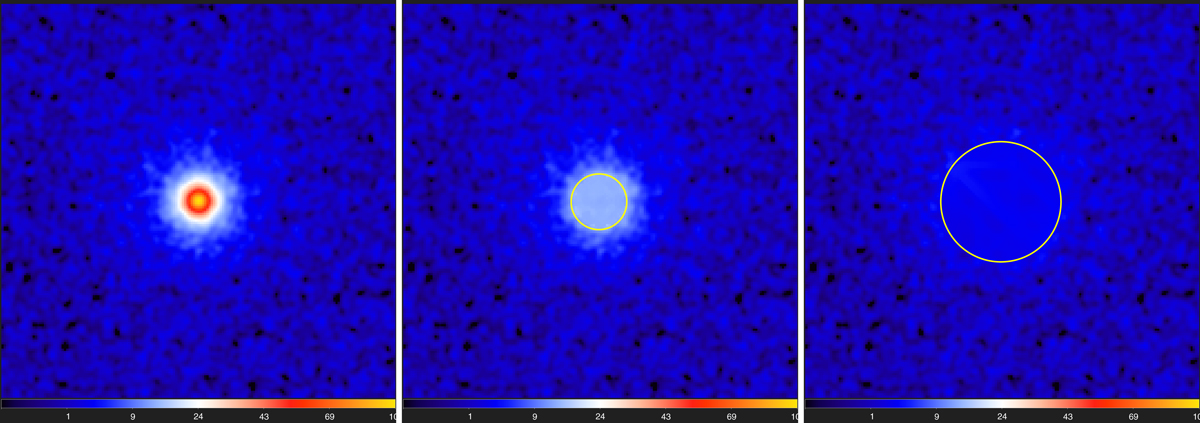Fig. 14.

Footprint expansion, illustrated in an image with 3″ resolution of a source with a peak intensity of 100, half-maximum size of 10″, and S/N of 100 (left). The source has an intensity profile defined by Eq. (2) with Θ = 5″ and ζ = 1, transforming into a power law I ∝ θ−2 for θ ≫ Θ and filling up the entire image, its faint outer areas (I ∼ 0.2) are largely lost within the noise. The initial footprint factor ϕn = 3 (Sect. 3.4.4) is too small for these power-law sources, hence background subtraction leaves a relatively bright pedestal containing a large amount of the source emission (middle). The footprint expansion algorithm (Sect. 3.4.6) enlarges ϕn by a factor of 2.2 (right), which lowers the source background by a factor of 5, and as a result, increases the source flux by a factor of 2.7. The improved flux is still below the true value by a factor of 1.9 because the actual footprint is about three times larger. Square-root color mapping.
Current usage metrics show cumulative count of Article Views (full-text article views including HTML views, PDF and ePub downloads, according to the available data) and Abstracts Views on Vision4Press platform.
Data correspond to usage on the plateform after 2015. The current usage metrics is available 48-96 hours after online publication and is updated daily on week days.
Initial download of the metrics may take a while.


